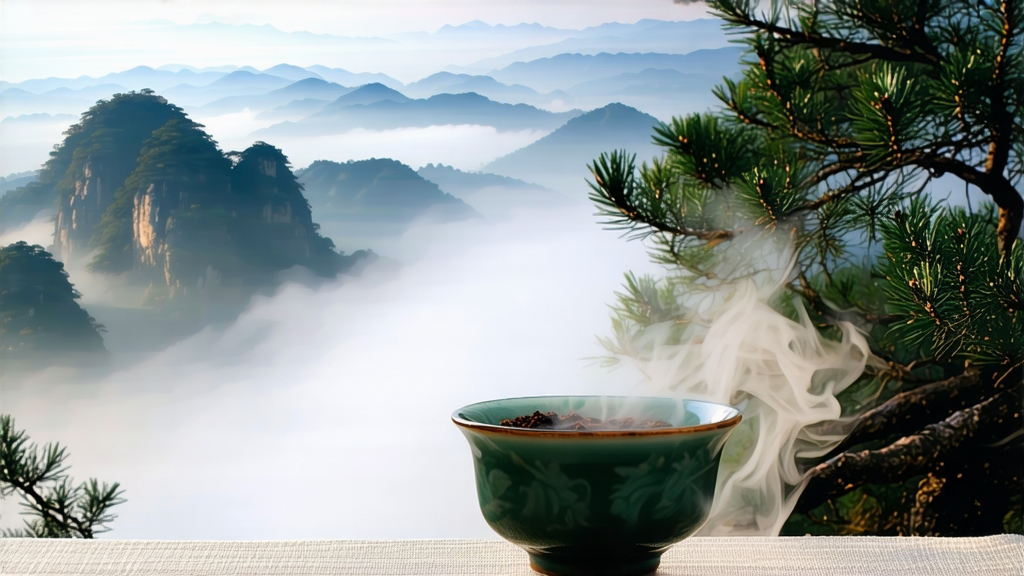
Long before English breakfast blends and Assam gardens ever existed, the first black tea the world ever tasted came from a narrow gorge in China’s Wuyi Mountains. Locals call it Zheng Shan Xiao Zhong; foreigners remember it as Lapsang Souchong. Born in Tongmu village at the turn of the seventeenth century, this pine-smoked ancestor launched the global craving for black tea, inspired the Earl Grey formula, and still guards its secrets behind bamboo gates and UNESCO world-heritage fog.
History: Smoke as Passport
Legend dates the birth to 1646, when Qing soldiers forced tea farmers to speed up drying. In haste, workers dried fresh leaves over fresh pine fires so the crop would not spoil. The Dutch traders anchoring at Xiamen port loved the aggressive campfire aroma, paid double, and shipped it to Amsterdam as “bohea.” By 1669 the British East India Company listed “souchon” in London auctions; Catherine of Braganza sipped it before stepping ashore to marry Charles II, making smoky tea the fashionable toast of Restoration England. Two centuries later, Scottish planters carried Lapsang seeds to Assam and Ceylon, effectively seeding every black tea garden on earth.
Terroir: Where Mist Writes Poetry
Tongmu lies inside a national nature reserve only 48 km² large; vehicles are banned, pesticides are illegal, and outsiders must register at a checkpoint. The gorge traps humid air from the Jiuqu (Nine-Bend) River, creating a 90 % average humidity and a temperature swing of 15 °C between day and night. Native pine species (Pinus taiwanensis) release resinous oils that drift into tea gardens, so even unsmoked leaf carries a whisper of sap. Soils are rhyolitic tuff rich in potassium and manganese—minerals that translate into the honeyed finish impossible to replicate beyond these crags.
Varieties: Three Faces of One Leaf
- Traditional Pine-Smoked Lapsang: Harvested one bud with two leaves in late April, withered over local pine embers inside a three-level wooden shed, rolled, oxidized 4–5 h, then smoked again for 8–10 h. Final firing uses a gentle 70 °C so the leaf keeps 3 % moisture yet absorbs just enough resin.
- Unsmoked “Wild” Lapsang: Same cultivar (Xingcun Xiaoye) but withered naturally in bamboo trays, baked over charcoal made from oak, never touching pine. The cup is peach-sweet with mineral depth; connoisseurs prize its orchid nose.
- Premium “Jin Jun Mei”: A 2005 innovation using only buds picked at 1500 m elevation. Finished tea appears gold-flecked; flavor marries malt, cacao, and longan. Because one pound needs 60 000 buds, it retails above 1000 USD.
Craft: The Smoke That Does Not Burn
Tongmu smoking sheds are built from cedar planks without nails, allowing expansion and contraction that regulates airflow. Below the slatted floor, pine logs smolder at 40–50 °C, never flaming. Master smokers judge readiness by ear: when the crackle softens to a lullaby, they shuffle trays, rotating every 20 min for eight hours. Over-smoking turns leaf bitter; under-smoking leaves vegetal notes. Only 120 families hold the intangible-heritage license, and each batch is tracked with a provincial QR code.
Chemistry: Why Pine Works
Pinene, limonene and bornyl acetate vaporize at low temperature and adhere to leaf surfaces. During oxidation, catechins convert to theaflavins and thearubigins; smoke phenols bond with these, creating unique lactones that give Lapsang its trademark “cinnamon-bacon” aroma. Gas-chromatography studies show 32 volatile compounds unique to Tongmu smoke, explaining why teas from outside villages—even when pine-smoked—lack the same complexity.
Grading: From Bohea to FTGFOP
Chinese domestic grades run Snow Tip (highest bud ratio), Special (tight strip), First, Second, Third. Export codes still echo colonial tongue: FOP (Flowery Orange Pekoe), GFOP (Golden), TGFOP (Tippy), FTGFOP (Finest). Smoked versions carry an added “L” for